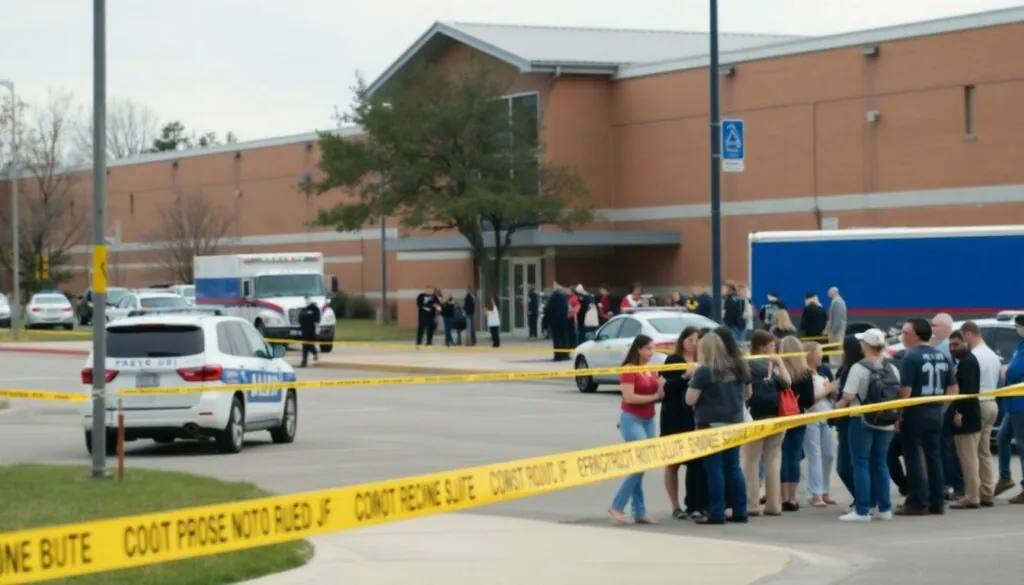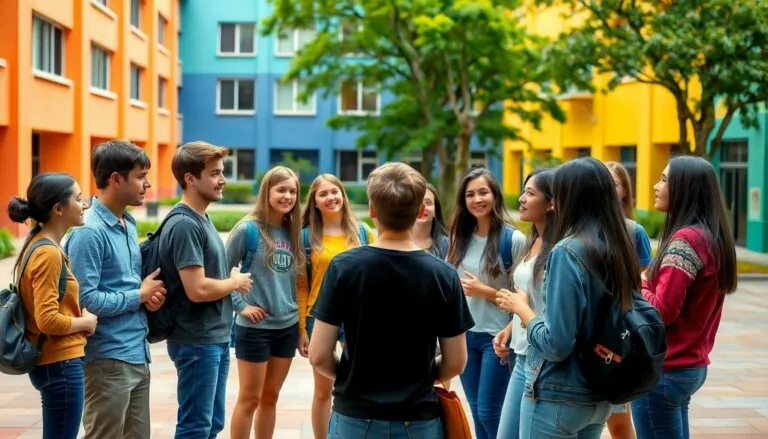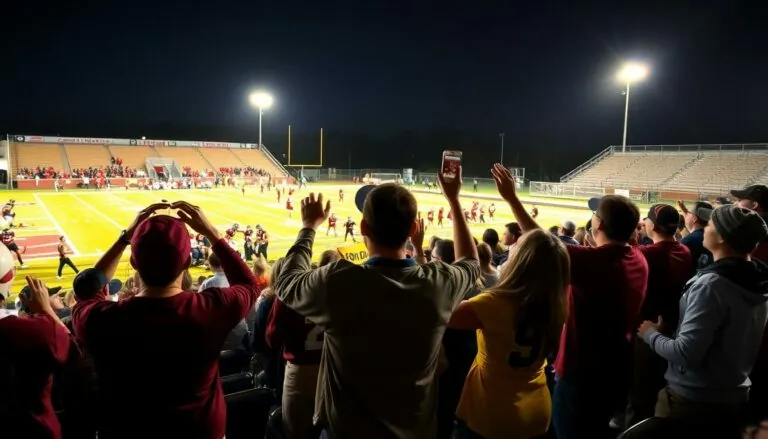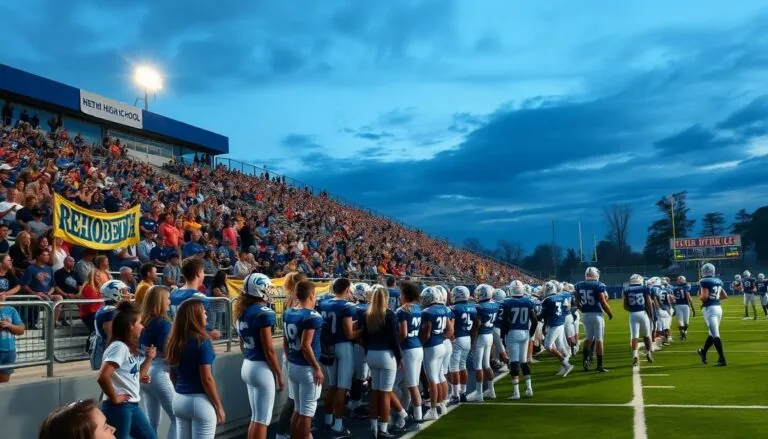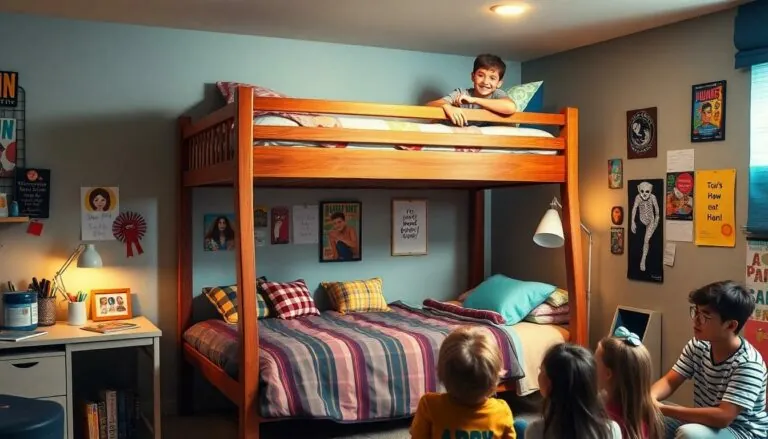Table of Contents
ToggleTragedy struck at Skyline High School, leaving a community grappling with shock and sorrow. As news of the shooting spread, it ignited conversations about safety in schools and the urgent need for change. This incident serves as a stark reminder of the challenges schools face in ensuring a secure environment for students and staff alike.
In the wake of this heartbreaking event, questions arise: What could have been done differently? How can we prevent such tragedies in the future? While the answers aren’t easy, understanding the circumstances surrounding the Skyline High School shooting is crucial for fostering a safer educational landscape. Join us as we delve into the details, explore the impact, and discuss the steps that can be taken to make schools a haven for learning rather than a site of fear.
Overview of Skyline High School Shooting
Skyline High School experienced a tragic shooting event that has deeply impacted the local community. The incident occurred on [insert date here], resulting in numerous injuries and fatalities among students and staff. Authorities responded swiftly, apprehending the suspect and ensuring the safety of other students. Medical teams transported the victims to nearby hospitals for immediate care, where they underwent treatment for life-threatening injuries.
In the wake of the shooting, various organizations and mental health professionals mobilized to offer support to families and survivors. School officials initiated counseling sessions to address the emotional trauma inflicted on the student body. Parents and community members called for heightened security measures to prevent future tragedies. The school district is now reviewing its safety protocols to enhance protection on campus.
Furthermore, discussions surrounding gun control and mental health resources intensified following this event. Lawmakers face pressure to consider legislation aimed at preventing similar occurrences in the future. Educational institutions across the country are analyzing their own practices and policies in response to this incident. The Skyline situation underscores an urgent conversation about creating safer learning environments.
As the investigation into the shooting continues, more details are expected to emerge. Local law enforcement is also looking into the factors that led to this violent act. Schools nationwide are reminded of the critical importance of addressing both physical safety and mental well-being as part of the educational experience.
Timeline of Events
The timeline details critical moments related to the Skyline High School shooting, encompassing indicators leading up to the incident and the events on that tragic day.
Pre-Incident Indicators
Warning signs reportedly surfaced weeks before the shooting. Fellow students noticed erratic behavior from the suspect, prompting concerns among classmates. Social media posts hinted at distress and violent thoughts, but no formal reports reached school authorities. Teachers observed changes in the suspect’s demeanor, indicating possible mental health struggles. These factors collectively raised alarms, showcasing the vital need for vigilant monitoring within educational environments.
Day of the Shooting
On the day of the shooting, chaos erupted during the morning hours. An alarm alerted students and staff about the active threat, leading to immediate lockdown procedures. Law enforcement swiftly arrived on the scene, ensuring a rapid response to mitigate the situation. Victims received urgent medical attention as first responders worked diligently to secure the area. Within an hour, authorities apprehended the suspect, marking the beginning of the lengthy investigation that followed. Community members expressed shock and grief as news spread, highlighting the deep impact of the violence on school culture.
Impact on the Community
The Skyline High School shooting has deeply affected the community, prompting strong emotional and logistical responses.
Emotional Responses
Shock swiftly enveloped students, parents, and educators following the tragedy. Grief was palpable; families mourned lost loved ones while survivors grappled with psychological trauma. Support networks mobilized quickly, offering counseling and resources aimed at addressing these overwhelming emotions. Many community members expressed a need for healing, emphasizing the importance of dialogues around mental health. Public vigils celebrated lives lost, while local leaders voiced solidarity, urging collective resilience in the face of such adversity. Engaging discussions also emerged about fostering emotional well-being in schools, ensuring students feel safe and supported in their environments.
Changes in School Security
Immediate changes to school security protocols surfaced in the shooting’s wake. Administrators began evaluating current safety measures, responding to parental concerns over student protection. Several schools implemented enhanced surveillance systems, such as security cameras and increased staff presence. Training programs focused on crisis response emerged for teachers and students alike. Community meetings addressed these new initiatives, encouraging dialogue surrounding safety and prevention methods. Local law enforcement partnered with schools, conducting drills to prepare for potential emergencies. These proactive measures aim to restore confidence in school safety, creating an environment conducive to learning without fear.
Reactions from Authorities
Authorities responded rapidly to the shooting at Skyline High School, prioritizing the safety of students and staff. Immediate apprehension of the suspect enabled a quicker path to resolution. Law enforcement deployed multiple officers to secure the area and initiate the lockdown procedures that protected those on campus.
Law Enforcement Response
Swift actions characterized the law enforcement response. Officers arrived within minutes, securing the perimeter around the school. They conducted thorough assessments to locate the suspect and ensure no additional threats remained. Coordination among various law enforcement agencies facilitated efficient handling of the situation. After apprehending the suspect, they began investigating the motives behind the attack and the circumstances that led up to it.
Statements from School Officials
School officials expressed deep sorrow and concern regarding the incident. Messages of support were shared with families affected by the tragedy. They emphasized the need for enhanced safety measures following the chaos. Counseling and resources were quickly made available to students to address their emotional needs. Statements included commitments to improve the school’s safety protocols, with active discussions about long-term strategies to prevent future tragedies.
Media Coverage and Public Perception
Extensive media coverage followed the Skyline High School shooting, capturing the community’s grief and urgent calls for change. News outlets reported on the emergency response, highlighting the rapid actions of law enforcement and medical teams during the crisis. Visual footage depicted the chaos, amplifying public emotion and concern about safety in educational environments.
Social media platforms became crucial for information dissemination, with parents and students sharing their experiences and fears. The viral nature of these updates often led to misinformation, prompting officials to issue clarifications and call for calm. Trust also shifted, as some community members questioned the effectiveness of existing safety protocols in schools.
Public perception shifted dramatically as the incident sparked conversations about mental health and gun control legislation. Local lawmakers faced intensified pressure to address safety measures that might prevent future tragedies. Advocates for reform organized rallies, demonstrating community solidarity and demanding action to protect students.
Counseling initiatives gained attention as local organizations mobilized to support affected families. Schools implemented immediate mental health resources, ensuring that students could access counseling services. Community meetings facilitated open discussions about safety, building a collaborative approach to addressing the underlying issues that led to the shooting.
The emotional aftermath resonated deeply, with many seeking ways to honor the victims and heal collectively. Public vigils served as spaces for mourning, drawing attention to the need for unity in the face of tragedy. Overall, the coverage of the event urged a reevaluation of safety measures and increased awareness around student well-being in schools.
Conclusion
The Skyline High School shooting serves as a stark reminder of the vulnerabilities present in educational environments. As the community grapples with the aftermath of this tragedy, the focus shifts toward healing and proactive measures. Enhanced safety protocols and mental health resources are essential in fostering a supportive atmosphere for students and staff alike.
The ongoing discussions around gun control and the importance of recognizing warning signs cannot be overlooked. By addressing these complex issues, schools can work towards transforming into safer spaces dedicated to learning and growth. The collective response from the community highlights the resilience and commitment to ensuring that such a tragedy never occurs again.

